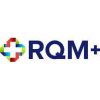For the second consecutive week, the doctor was able quickly identify another rarely cited Form 483 observation: Management responsibility. However, it is Dr. D’s strong opinion that every single time the agency issues a warning letter to an offending establishment, §820.20 should be cited. Why? Well if you must ask, management clearly must have some oversight issues if an inspection results in multiple Form 483 observations and a warning letter. Besides, it is not like management responsibility is rocket science. Even ISO 13485 delineates many requirements similar to those depicted in the Quality System Regulation (QSR), as they pertain to management responsibility. Device establishments must try really hard to screw up this section of the QSR. The FDA investigator who inspected the establishment mentioned in this week’s guidance clearly became effortlessly ebullient (look-it-up) while writing Form 483 observation one. Enjoy!
Warning Letter – October 5, 2015
When the representative of a device establishment states: “he was not aware of a quality system, and that he was not familiar with the regulations applicable to medical devices,” bad things are going to happen, and quickly. Marry that incredibly lame response with: (a) failing to have a management representative; (b) failure to have written SOPs; (c) failure to hold management reviews; (d) failure to establish a quality management system; (e) failure to perform audits, etc. and the FDA will quickly unleash some serious regulatory pain (a.k.a, opening a can of FDA whoop-ass). If you don’t believe Dr. D, just read the warning letter excerpt. You just cannot make this stuff up.
Warning Letter Excerpt
Observation One: “Failure to adequately establish and maintain an organizational structure to produce devices in accordance with 21 CFR 820.20”
“Your firm has not sufficiently demonstrated that appropriate personnel with the necessary education and training are given the authority to assess the quality of medical devices (e.g., gauze, gel and wound dressings) made and/or distributed by your facility.”
“For example, the current structure of your firm does not identify an organizational unit and/or management representatives who have the authority over and responsibility for ensuring that quality system requirements are actively established and achieved, and maintained, reviewed, audited and adhered to, and that any deviations/deficiencies are reported to management with executive responsibility to effect product compliance with the Quality System regulation through a management review process.”
“This was substantiated during the inspection, when your firm representative, responding to the investigator’s inquiries about whether the firm had a quality system with oversight over the manufacturing of medical devices (i.e. gauzes, gel and wound dressings), replied that he was not aware of a quality system, and that he was not familiar with the regulations applicable to medical devices. It was also explained that some of the records and SOPs provided to the investigator during the inspection are not applicable to Gentell organization. Additionally, it was stated that the firm’s management has not established a management representative with oversight over medical device quality. And, that manufacturing reviews are not performed, and there are no written procedures on how to conduct management reviews. Furthermore, it was stated that quality audits are not performed by the firm, and have not been conducted since 2007, that nobody is trained regarding FDA’s requirements for manufacturing medical devices, and that the firm has not been audited by any outside companies, nor have they hired an outside contractor.”
21 CFR, Part 820.20 – Management Responsibility
“(a) Quality policy. Management with executive responsibility shall establish its policy and objectives for, and commitment to, quality. Management with executive responsibility shall ensure that the quality policy is understood, implemented, and maintained at all levels of the organization.
(b) Organization. Each manufacturer shall establish and maintain an adequate organizational structure to ensure that devices are designed and produced in accordance with the requirements of this part.
- Responsibility and authority. Each manufacturer shall establish the appropriate responsibility, authority, and interrelation of all personnel who manage, perform, and assess work affecting quality, and provide the independence and authority necessary to perform these tasks.
- Resources. Each manufacturer shall provide adequate resources, including the assignment of trained personnel, for management, performance of work, and assessment activities, including internal quality audits, to meet the requirements of this part.
- Management representative. Management with executive responsibility shall appoint, and document such appointment of, a member of management who, irrespective of other responsibilities, shall have established authority over and responsibility for:
(i) Ensuring that quality system requirements are effectively established and effectively maintained in accordance with this part; and
(ii) Reporting on the performance of the quality system to management with executive responsibility for review.
(c) Management review. Management with executive responsibility shall review the suitability and effectiveness of the quality system at defined intervals and with sufficient frequency according to established procedures to ensure that the quality system satisfies the requirements of this part and the manufacturer’s established quality policy and objectives. The dates and results of quality system reviews shall be documented.
(d) Quality planning. Each manufacturer shall establish a quality plan which defines the quality practices, resources, and activities relevant to devices that are designed and manufactured. The manufacturer shall establish how the requirements for quality will be met.
(e) Quality system procedures. Each manufacturer shall establish quality system procedures and instructions. An outline of the structure of the documentation used in the quality system shall be established where appropriate.”
Compliance for Dummies
As previously mentioned, §820.20 really does have significant similarities with ISO 13485, so it is relatively easy to script a procedure that meets both requirements. For example, how difficult is it to develop a clear and concise quality policy? For those of you who are a little long in the tooth (like the old doctor), do you remember the Ford quality policy? Quality is Job One! It was simple and to the point, and frankly, it must have been pretty easy to train employees on the meaning. Definitely not rocket science.
Creating an adequate organizational structure to support the QMS might be a slightly more difficult task. An organization has to actually establish procedures, train personnel, create some infrastructure and an organizational chart, and select a management representative (hint: Not the rep mentioned in this week’s warning letter). Still, these activities are far from rocket science.
Creating some quality objectives and discussing the effectiveness of the quality policy (annually) in a management review—nope, still not rocket science. Throw in some quality planning and actually script some meaningful procedures that might take some basic-English composition skills and hopefully some knowledge of the FDA’s QSR— unfortunately, still not close to rocket science. Telling the FDA investigator, “I am not aware of a quality system, and that I am not familiar with the regulations applicable to medical devices” Priceless!
Takeaways
For this week’s guidance, Dr. D is still laughing too hysterically to recommend a serious takeaway, so the doctor will leave the readers with just one thought. The next time you are called into an FDA inspection, place yourself in the investigator’s shoes. What would you do if you asked a question pertaining to the QMS and the answer you received was, “I am not aware of a quality system, and I am not familiar with the regulations applicable to medical devices?” Houston, we have a problem. In closing, thank you again for joining Dr. D, and I hope you find value in the guidance provided. Until the next installment of DG, cheers from Dr. D. and best wishes for continued professional success.
References
- Code of Federal Regulation. (2015, April). Title 21 Part 820: Quality system regulation. Washington, D.C.: U.S. Government Printing Office.
- Devine, C. (2011). Devine guidance for complying with the FDA’s quality system regulation – 21 CFR, Part 820. Charleston, SC: Amazon.
- Devine, C. (2013). Devine guidance for managing key attributes of a FDA-compliant quality management system – 21 CFR, Part 820 Compliance. Charleston, SC: Amazon.
- FDA. (October 5, 2015). Inspections, Compliance, Enforcement, and Criminal Investigations. Gentell. Accessed November 2, 2015. Retrieved from http://www.fda.gov/ICECI/EnforcementActions/WarningLetters/2015/ucm467164.htm







